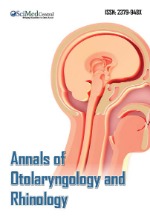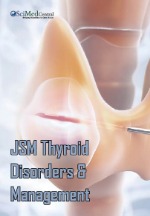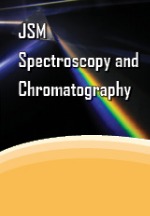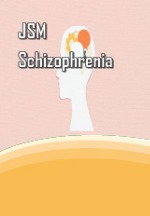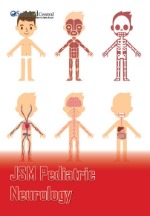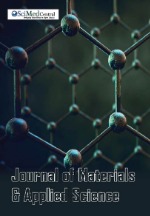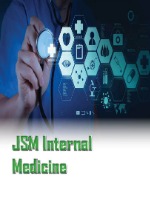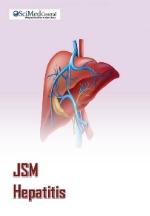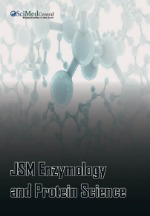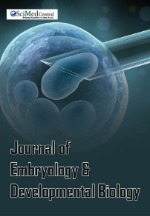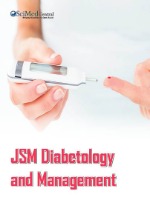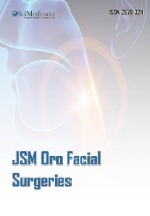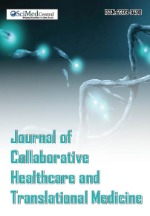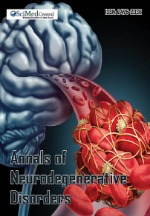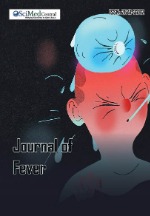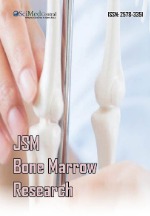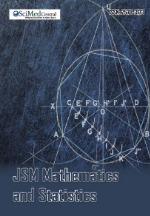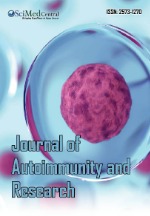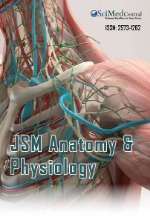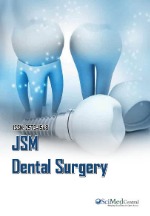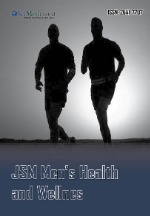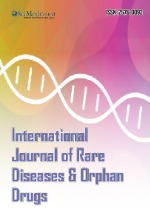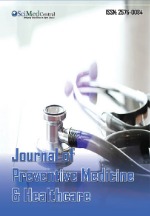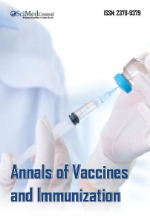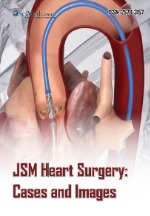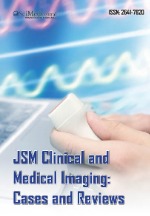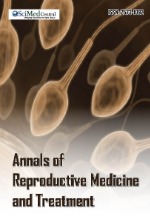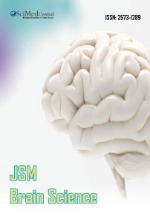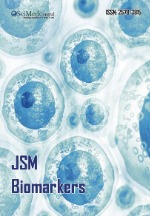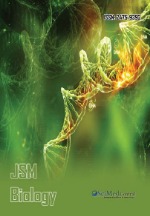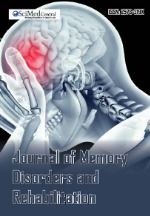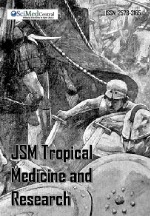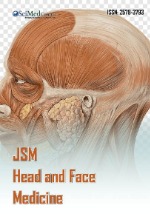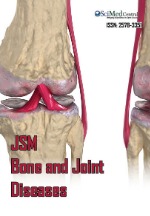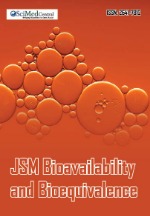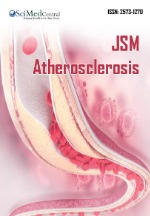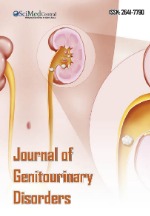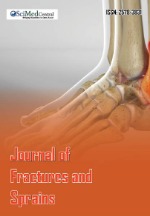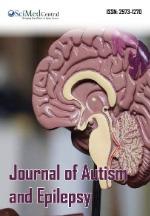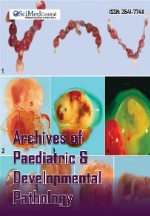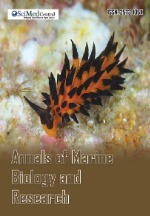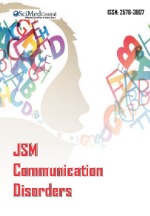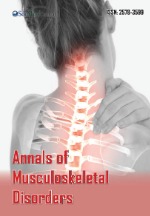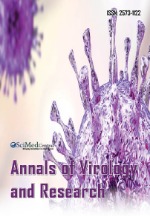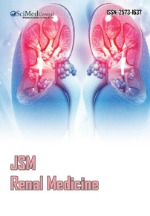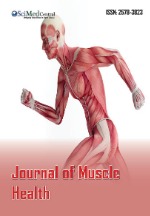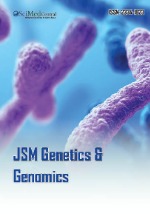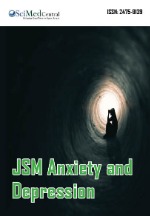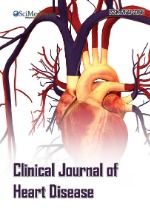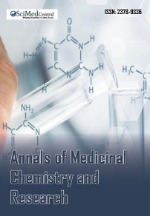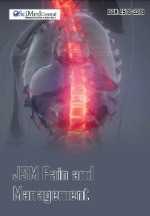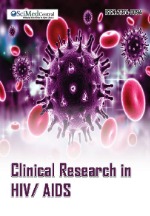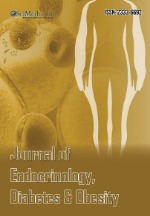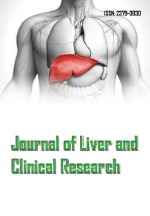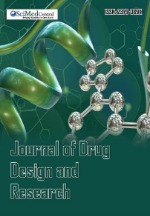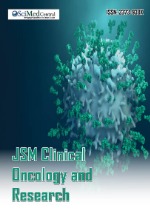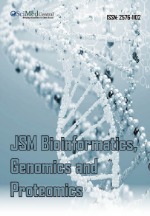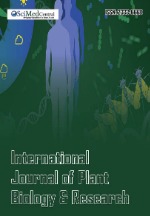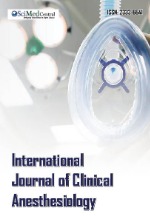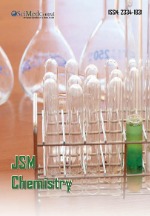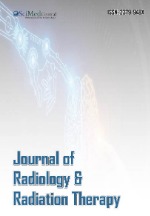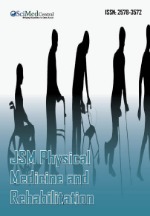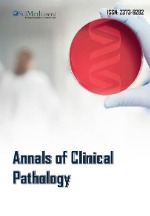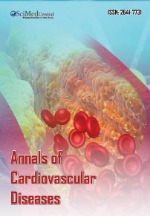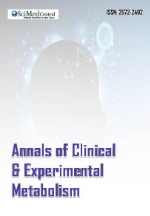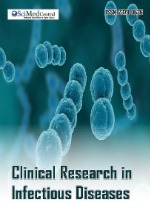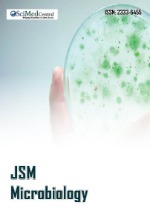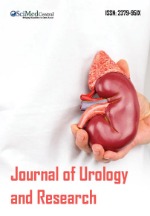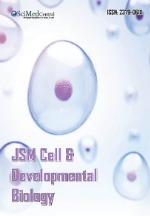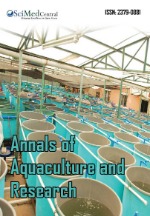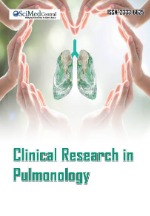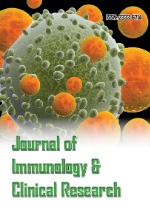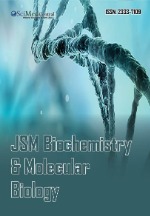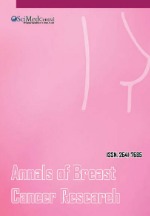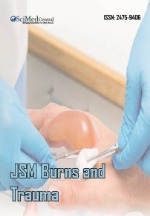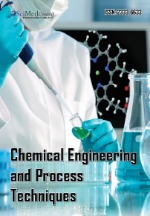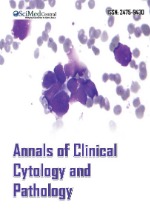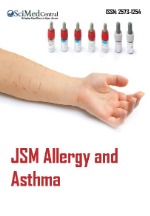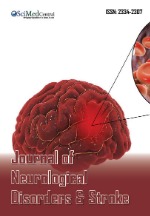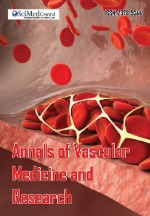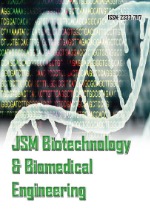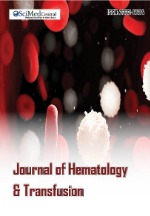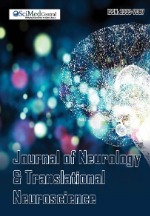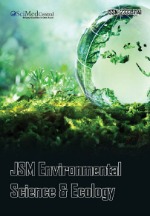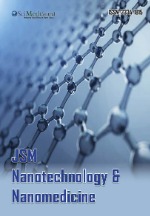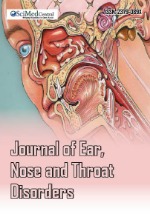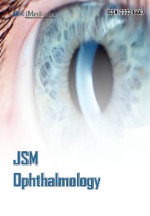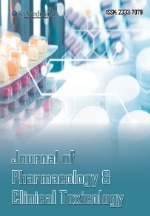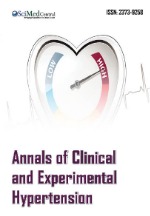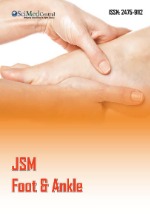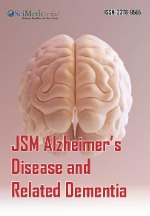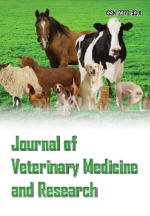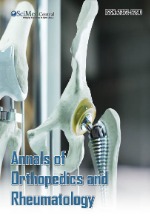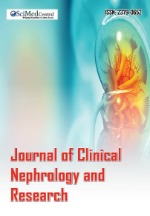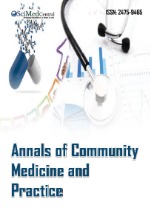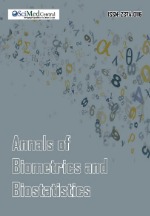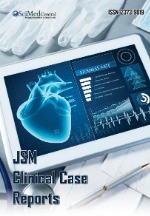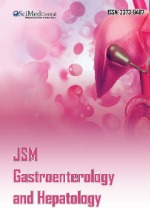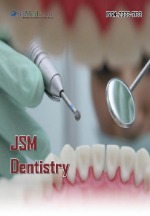Yisui Shengxue Capsule Improves Post-Chemotherapy Immunosuppression by Inhibiting MDSCs: A Multilevel Study
- 1. Gansu University of Traditional Chinese Medicine, Molecular Medicine Laboratory of Major Diseases, China
- 2. Affiliated Hospital of Gansu University of Traditional Chinese Medicine, Cancer Research Center, China
- #. Both the authors contributed equally
Abstract
Chemotherapy induces Myeloid-Derived Suppressor Cells (MDSCs) to be the primary negative regulator of immunity in the Tumor Microenvironment (TME). MDSCs inhibit cellular immune responses by enhancing tumor immune escape, severely endangering human survival and health. Agents selectively targeting MDSCs are currently in paucity. This study developed a novel traditional Chinese medicine formula Yisui Shengxue (YSSX) Capsule to mitigate post-chemotherapy immunosuppression. A clinical trial validated that this formula could improve White Blood Cell (WBC), Neutrophil (NEUT), and lymphocyte (LYM) counts in the peripheral blood of patients. Network pharmacology analysis showed that active ingredients of YSSX can target arginine synthesis and immune-inflammatory pathways. In vivo experiments revealed that YSSX significantly suppressed the JAK2/STAT3 pathway in mice with CTX-induced post- chemotherapy leukopenia. In addition, YSSX inhibited IL-10, Arg-1, iNOS, and ROS, and increased IFN-γ release, thereby decreasing MDSCs amplification and recovering T cell function and activity. To conclude, YSSX can attenuate MDSCs-mediated arginine and NO metabolism by modulating the JAK2/STAT3 signaling pathway to mitigate post-chemotherapy immunosuppression. Thus, YSSX is a potential agent for post-chemotherapy immunosuppression.
KEYWORDS
- Immunosuppression after chemotherapy; Yisui Shengxue Prescription; MDSCs; T cells; Traditional Chinese Medicine
CITATION
Zhang L, Niu F, Qi Y, Yun C, Hou H, et al. (2024) Yisui Shengxue Capsule Improves Post-Chemotherapy Immunosuppression by Inhibiting MDSCs: A Multilevel Study. J Cancer Biol Res 11(2): 1150.
INTRODUCTION
Malignancy endangers human health due to high incidence and mortality [1]. As a crucial treatment [2], chemotherapy’s cytotoxicity not only kills tumor cells but also injures normal cells, leading to post-chemotherapy immunosuppression and affecting peripheral blood White Blood Cell (WBC) generation [3], which is the primary cause of chemotherapy delay, discontinuation, and incompletion [4]. Research showed that the aberrant increase of Myeloid-Derived Suppressor Cells (MDSCs) plays a critical role in post-chemotherapy immunosuppression [5]. Moreover, MDSCs reduction after chemotherapy usually indicates good efficacy and favorable therapeutic outcome, while MDSCs elevation is closely correlated with disease worsening in various tumors (e.g., gastric cancer, lung cancer) [6,7]. More studies revealed that chemotherapy activated the AK2/STAT3 signaling pathway in myeloid cells [8], significantly increasing and activating MDSCs to promote cytokine IL-10, IL-6, and TGF-β release and suppress IFN-γ release [9]. Arg-1 produced by MDSCs decomposes arginine and cysteine required in T-cell activation, leading to hindered CD4+ and CD8+T cell activation [10]. MDSCs also increase iNOS- synthesized NO to downregulate T-cell recipient-related ζ chain. ζ chain loss induces signal transduction failure of CD4+T and CD8+T cell activation [11,12]. Therefore, inhibiting the JAK2/ STAT3 pathway, reducing arginine depletion by MDSCs, and diminishing NO’s effects on TCR-MHC antigenic peptides to reinforce T cell immunity might be the key to mitigating tumor immune escape.
Traditional Chinese medicine has multiple components, pathways, and targets [13]. Thus, it can relieve patients’ fatigue, chronic pain, anorexia/cachexia, etc., improve their quality of life, and reduce Adverse Events (AE) and complications induced by chemotherapy, radiotherapy, or targeted therapy [14]. YSSX is a formula for post-chemotherapy leukopenia and for improving immune functions, composed of oil-fried Yin Yanghuo (Herba Epimedii, aerial part of epimedium), Lu Rong (Cornu Cervi Pantotrichum, deer velvet), Zi Heche (Placenta Hominis, human placenta), Ren Shen (Radix et Rhizoma Ginseng, Ginseng), Gan Jiang (Rhizoma Zingiberis, Dried Ginger), Bran-fried Baizhu (Rhizoma Atractylodis Macrocephalae, White Atractylodes Rhizome), Huang Qi (Radix Astragali seu Hedysari, Milkvetch Root), Ci Shi (Magnetitum, magnetite), Sha Ren (Fructus Amomi, villous amomum fruit), Wine-processed Shan Zhuyu (Fructus Corni, Asiatic cornelian cherry fruit), Processed He Shouwu (Radix Polygoni Multiflori Praeparata cum Succo Glycines Sotae, prepared fleece flower root), E Jiao (Colla Corii Asini, donkey-hide gelatin), Wine-fried Dahuang (Radix et Rhizoma Rhei, Rhubarb), and Deep-fried Gan Cao (Radix et Rhizoma Glycyrrhizae Praeparata cum Melle, prepared licorice root). The formula warms the kidney, supplements the essence, solidifies the foundation, fortifies the spleen, boosts qi, and consolidates the original spirit. Chemotherapy-related toxicity injures the original qi in the spleen and kidney. This formula warms the spleen and kidney to improve the internal environment to mitigate post-chemotherapy leukopenia and compromised immunity significantly. This formula has been patented [15,16], while standard clinical research has not been carried out, nor have in-depth investigations regarding the specific mechanisms.
Therefore, this study intends to reveal the mechanism of YSSX improving post-chemotherapy myelosuppression by combining clinical retrospective studies, network pharmacology analysis, and in vivo experiments. First, YSSX’s efficacy on myelosuppression following chemotherapy was systematically evaluated via clinical trials. Second, potential targets and mechanisms in YSSX treating post-chemotherapy leukopenia were analyzed using network pharmacology analysis. Last, regulatory effects of YSSX on post-chemotherapy immunosuppression were explored via in vivo animal experiments. Overall, this study demonstrated the mechanism of YSSX alleviating post-chemotherapy immunosuppression, providing a foundation for future clinical application.
MATERIALS AND METHODS
Clinical research
Patients: Eligible patients with lung or gastric cancer treated in the Affiliated Hospital of Gansu University of Chinese medicine from July 2017 to June 2020 were recruited.
Sample size calculation: This is a clinical observational study, and patients were divided into two groups. The sample size was calculated using the G-power. Independent-sample t-tests were performed using a large effect size (d=0.80, α=0.05) and statistical power of 1-β = 0.95. The required sample size was 84.
INCLUSION AND EXCLUSION CRITERIA
Inclusion criteria
- Patients were diagnosed with malignant tumors via cytological or histological examinations.
- Patients didn’t have medical contraindications to chemotherapy.
- Patients were administered Leucogen tablets or YSSX capsules to elevate WBC levels.
Exclusion criteria
- Patients with severe primary diseases in the heart, liver, kidney, and hematology system;
- WBC count < 2.0×109/L, accompanied by severe infections;
- Patients with bone metastasis;
- Patients with incomplete clinical information;
- Patients who need to adjust therapies due to disease progression and variation during the study.
Grouping and administration
Chemotherapy protocol: Lung cancer: cisplatin+etoposide/ paclitaxel/pemetrexed/docetaxel or carboplatin+paclitaxel/ pemetrexed. Gastric cancer: cisplatin/oxaliplatin/docetaxel/ paclitaxel+fluoropryidines (5-5FU/capecitabine/tegafur (gimeracil and oteracil).
Administration: Patients were assigned to Leucogen (LCG) and the Yisui Shengxue capsule (YSSX) groups. LCG (H32025444, Jiangsu Jibeier Pharmaceutical Co., Ltd., China), YSSX (Z20190218000, the affiliated Hospital of the Gansu University of Chinese Medicine, China). LCG administration method: 20 mg orally 3 times daily; YSSX administration method: 6 pills orally 3 times daily. The administration was when WBCs≤4.0×109/L after chemotherapy or during chemotherapy for prophylactic treatment. Patients from the two groups were given symptomatic and supportive therapies during the treatment, and other drugs didn’t affect WBC counts.
Data Collection and Entry
The general data includes gender, age, tumor type (lung cancer, gastric cancer), WBC-elevating drugs during chemotherapy (specifically LCG or YSSX), and routine blood test results before treatment and after a 7-day post-chemotherapy WBC-elevating therapy. All clinical data were retrieved from the medical record system of the Affiliated Hospital of the Gansu University of Chinese Medicine. Information from clinical records was printed and entered into Excel tables to construct a patient database.
NETWORK PHARMACOLOGY ANALYSIS
Selecting Potential Active Components and Targets of the YSSX Capsule
Compounds in each herb of YSSX were retrieved from the Traditional Chinese Medicine Systems Pharmacology Database and Analysis Platform (TCMSP). The Absorption, Distribution, Metabolism, And Excretion (ADME) criteria were set as oral bioavailability (OB) ≥30% and drug-likeness (DL) ≥0.18 to obtain potential active ingredients. Targets were searched further using the TCMSP database and supplemented based on published literature. Proteins identified using the UniProt database (https://www.uniprot.org/) were converted into gene names, which were predicted targets of the potential active components of YSSX capsules.
Leukopenia Target Retrieval
Disease-related targets were retrieved using “Leukopenia” as the search term in the GeneCards (https://www.genecards. org) and OMIM (http://www.omim.org/) databases. Data from two databases were merged, redundant entries were removed, and the final disease target database was obtained. Acquired Gene targets were converted to target genes using the UniProt database.
Potential Active Components-Drug-Disease Target Network Construction of YSSX
Core targets were obtained by intersecting targets of YSSX active compounds and leukopenia via Venny 2.1.0. The “Active ingredients-drug-disease target” network was established by entering drug-disease targets and active components of YSSX into Cytoscape3.7.2. In the network, “nodes” represent active components or targets, and “edge” represents the relation between two nodes.
Protein-Protein Interaction (PPI) Network Construction and Topological Analysis
Potential targets of YSSX treating leukopenia were imported into the STRING database (https://tcmspw.com/tcmsp.php). The organism was set as “homo sapiens”, the Required score was designated as “medium confidence (0.400)”, and FDR stringency was set as “medium (5 percent)”. A PPI network of YSSX capsules treating post-chemotherapy leukopenia was constructed.
Core Target Functions and Pathway Enrichment Analysis
Gene Ontology (GO) functional enrichment analysis was completed using DAVID (https://david.ncifcrf.gov/), and the results were visualized using the bioinformatics platform.
Kyoto Encyclopedia of Genes and Genomes (KEGG) pathway enrichment analysis was performed for core target genes using the Metascape platform. Core targets were entered into the Metascape (http://metascape.org) platform. Terms with a P-value < 0.01, minimum count of 3, and enrichment factor of >1.5 were considered significant. KEGG metabolic pathway enrichment analysis and visualization were performed. The KEGG pathway (https://www.kegg.jp/kegg/pathway.html) database was utilized to analyze core targets-enriched pathways further.
IN VIVO EXPERIMENTAL STUDY
Animal Source
Experimental animals: C57BL/6J male mice (n=40) were selected, weighing 18-22 g, purchased from the Sibeifu (Beijing) Biotechnology Co. Ltd. Certificate: No.110324210106738868, License: SCXK (Beijing) 2019-0010. This experiment was approved by the ethics committee of Gansu University of Chinese Medicine (Ethical review number: 2021-367). Animals were housed in the SPF-grade Laboratory Animal Center of the Gansu University of Chinese Medicine (temperature 20-24 ?; relative humidity 45-65%; a 12 h light/dark cycle). Mice were allowed to move freely and provided standard feed and sufficient ultrapure water. ±±
Grouping and Administration
Mice were numbered, weighed, and grouped using a random number table. There were 4 groups: Control group (CTR), Model group (Cyclophosphamide (CTX), HY-17420, Med Chem Express, USA), LCG group, and YSSX group. Normal mice received intraperitoneal injections of CTX for 3 consecutive days. The peripheral blood WBC count was detected, and a decline indicated successful modeling [17].
CTR: Normal mice were intraperitoneally injected with normal saline (0.1 mL/10 g) for 3 consecutive days.
CTX: Normal mice were intraperitoneally injected with CTX (100 mg/kg/d) for 3 consecutive days; after modeling, mice were gavaged with 0.9% normal saline (0.1mL/10g) for 7 straight days.
LCG: Normal mice were intraperitoneally injected with CTX (100 mg/kg/d) for 3 consecutive days; after modeling, mice were gavaged with LCG (0.0078 g/kg/d) for 7 consecutive days.
YSSX: Normal mice were intraperitoneally injected with CTX (100 mg/kg/d) for 3 consecutive days; after modeling, mice were gavaged with YSSX (0.0078 g/kg/d) for 7 consecutive days.
Indicator Detection
HE: The mice’s bone marrow, spleen, and thymus tissue were fixed, dehydrated, and embedded for histological analysis. Slides were evaluated in a blinded fashion. By quantifying the Model and Control groups (n=5), 10 fields were randomly selected and quantified per mouse to obtain Mean Linear Intercept (MLI). The extent of tissue injury was assessed using optical microscopy following the manufacturer’s instructions.
Routine Blood Test: Mice were anesthetized following 7-day interventions. Peripheral blood samples were collected in EDTA- anticoagulated tubes from the abdominal aorta and analyzed with an animal automatic hematology analyzer (Mindray 2800 BC-2800Vet).
Flow Cytometry: Cell suspension sample preparation: After anesthesia, mice’s bone marrow cavities were exposed, and bone marrow cells were flushed to sterile Petri dishes using a 1mL sterile disposable syringe and PBS (1% BSA). The single-cell suspensions were harvested by filtration through 400-mesh sieves into 10 mL centrifuge tubes and centrifuged with supernatant discarded.
Mice’s spleens were immersed in PBS, ground, and filtered using 400-mesh sieves with single-cell suspensions collected in 10 mL centrifuge tubes. The supernatant was discarded following centrifugation, and 2 mL of red cell lysis buffer (LSB01, Multi Sciences, China) was added to each tube and homogeneously mixed. Subsequently, the samples were incubated at room temperature for 10 min, avoiding light, and centrifuged at 1500 r for 5 min with the supernatant discarded. Peripheral blood was harvested in sodium heparin tubes from the abdominal aorta and mixed evenly. Samples (100 μL) were added to 10 mL centrifuge tubes with 2 mL red blood cell lysis buffer, mixed evenly. Samples were then incubated at room temperature for 10 min, avoiding light, and centrifuged with supernatant discarded. Subsequently, dark-treated single-cell suspensions (100 μL, 1×106 cells) reacted with surface antibodies CD11b+ and Gr-1+ (A10715, Multi Sciences, China) of mouse MDSCs, surface antibodies CD3+, CD4+, CD8+ (A10913, A10431, A10913, Multi Sciences, China), and surface antibodies iNOS (696805, Biolegend, USA) at 4 ? for 15 min. MEDIUM A (100 μL) was supplemented and incubated at room temperature for 15 min avoiding light. The samples were resuspended with 100 μL of MEDIUM B and fluorescently labeled surface antibodies iNOS (7 μL) and loaded into the flow cytometer (FASCelestaTMEXFLOW-206, BD, USA). Flow cytometry was performed with results analyzed using software. All operations were conducted following a strict protocol.µµµµµ
Immunohistochemistry (IHC): Spleen sections were dewaxed and antigen-repaired (PH 8.0 EDTA 100? 3 min). Endogenous peroxidase activity was blocked with 3% H2O2 (15- 20 min) and non-specific binding with goat serum (15-20 min). Primary antibodies were applied overnight at 4 ?. Following PBS washing × 3, sections were incubated with secondary antibodies at room temperature for 50 min, avoiding light. A DAB Kit was utilized for antibody detection. All images were examined using a microscope (FV1000, Olympus, Japan). The expression of p-JAK2 and p-STAT3 in spleen tissue was detected using IHC. Primary antibody: p-JAK2 (YP0155, ImmonoWay, USA), p-STAT3 (GTX118000, GeneTex, USA). Secondary antibody: (fluorescent secondary antibody, Servicebio, China).
Immunofluorescence: The sections were rewarmed and quenched (G1221, Servicebio, China) for 5 min, flushed with water for 10 min, and stained with ROS for 30 min at 37?, avoiding light. DAPI (G1012, Servicebio, China) was supplemented and cultured for 10 min at room temperature, protected from light. Following section washing, coverslips were mounted using the antifade mounting medium (G1401, Servicebio, China) and detected using confocal laser microscopy (Nikon Eclipse E100, Nikon, Japan). Sections were dewaxed by xylene (10023418, Sinopharm Chemical Reagent Co. Ltd, China), rehydrated by ethanol (100092683, Sinopharm Chemical Reagent Co. Ltd, China) and distilled water, and repaired by EDTA buffer (pH=8.0, G1206, Servicebio, China). Sections were cultured with primary antibodies overnight at 4 °C. The next day, secondary ARG-1 antibodies (GTX109242, GeneTex, USA) and iNOS antibodies (GTX130246, GeneTex, USA) were applied for 1 h following PBS washing. Samples were then washed with PBS, and the nuclei were stained with DAPI, which was detected using confocal laser microscopy.
ELISA: Following the manufacturer’s instructions, serum IL-10 (MM-0176M1, MEIMIAN, China) and IFN-γ (MM-0182M1, MEIMIAN, China) were detected using mouse IL-10 and IFN-γ ELISA kits.
Statistical Analysis
All data were analyzed using the SPSS 22.0 software. Measurement data that fulfilled normal distribution were expressed as c ±S. One-way ANOVA was used to compare three or more groups. When variance was inhomogeneous, Dunnett’s T3 method was used; when variance was homogeneous, the LSD method was used. Data that not fulfilled normal distribution were analyzed using a nonparametric test and expressed as medians and interquartile range. p < 0.05 was interpreted as statistically significant.
RESULTS
YSSX Significantly Mitigates Leukopenia and Lymphopenia
General Information
Altogether 118 patients were recruited in this clinical study (LCG, n=58; YSSX, n=60). No significant differences were observed in gender, previous history, tumor type, and TNM classification (p > 0.05) between the two groups, suggesting that the two groups had equivalent baseline characteristics and were comparable [Table 1]. Variations in patients’ routine blood test results before and after treatment are shown in [Table 2]. Patients had significantly elevated WBC and neutrophil (NEUT) counts in the peripheral blood after LCG treatment, but variations in lymphocyte (LYM) count were insignificant. Patients exhibited significantly increased WBC, NEUT, and LYM counts in the peripheral blood after YSSX treatment. This implies that YSSX increases the WBC count of patients as much as LCG and significantly improves the LYM count and immunity.
Note: Compared with LCG, *p<0.05, **p<0.01, ***p<0.001.
Note: Compared with before the treatment, *p<0.05, **p<0.01,***p<0.001.
Variations in patients’ routine blood test results before and after the treatment. Before the treatment, no significant differences were witnessed in peripheral blood cell count (p > 0.05). Compared with the condition before the treatment, patients from LCG and YSSX groups showed elevated WBC and NEUT counts (p < 0.001) after the treatment. And the two groups presented no significant differences in WBC and NEUT counts before and after the treatment (p > 0.05). Patients receiving YSSX had elevated LYM count after the treatment (p < 0.05), and other parameters didn’t exhibit significant differences.
Predicting Targets and Signaling Pathways when YSSX Treating Leukopenia via Network Pharmacology Analysis
The network pharmacology method can predict the therapeutic targets of drugs via big data. To find potential targets of YSSX capsules for leukopenia, we did a network pharmacology analysis, showing that there are 284 corresponding targets for YSSX and 1072 targets for leukopenia, and 73 intersecting genes were obtained by intersecting disease targets and drug targets. These are the main gene targets of YSSX for post-chemotherapy leukopenia [Figure 1A].
Figure 1: Post-chemotherapy leukopenia targets and pathways were analyzed using network pharmacology. (A) YSSX targets, disease targets, and intersected genes. (B-C) PPI network analysis for intersected targets. (D) Active component-core target network based on the relation between action targets of drugs and leukopenia targets. (E) GO enrichment analysis selecting biological processes. Blue BP indicates biological processes, red CC indicates cellular components, and green MF indicates molecular functions. (F) KEGG enrichment analysis of signaling pathways regulated by YSSX.
Subsequently, intersected targets were processed for PPI analysis, and core targets were MAPK8, ERBB2, NFKBIA, BCL2L1, CASP8, CXCL8, EGFR, INS, MYC, IL1B, CASP3,STAT3, VEGFA, TP53, and AKT1 [Figure 1B-C]. Interaction networks of effective small molecules in YSSX and intersected targets were performed by Cytoscape software [Figure 1D]. GO enrichment analysis was performed for core targets with the top 10 pathways selected: apoptotic process, positive regulation of gene expression, negative regulation of apoptotic process, cellular response to lipopolysaccharide, and positive regulation of cell proliferation. Active cellular components mainly were Nucleus, Nucleoplasm, Cytosol, Extracellular space, etc. The molecular level functions of relevant targets in treating post- chemotherapy leukopenia were enriched primarily on enzyme binding, Identical protein binding, protein binding, and Cycteine- type endopeptidase activity involved in apoptotic signaling pathways [Figure 1E]. KEGG pathway enrichment and correlation network maps for the targets of relevant herbal components were constructed. The top 15 pathways include the cancer pathway, AGE-RAGE pathway, TNF pathway, NF-κB pathway, p53 pathway, and arginine synthesis pathway [Figure 1F]. YSSX can treat post-chemotherapy leukopenia by adjusting STAT3, NF- κB, and arginine biosynthesis pathways.
YSSX Improves the General Condition And Immunity Of Mice
Mouse models with leukopenia were established to confirm YSSX capsules’ efficacy. It was found that CTX reduced mouse food intake, water intake, and body weight, which were all improved both by YSSX and LCG. HE staining results indicated that mice from the CTX group had less stained nuclei with reduced cell divisions. The structures of the spleen’s red pulp, marginal zone, and white pulp were ill-defined, with scattered and decreasing lymphocytes. Lymphocytes in the cortical area of the thymus were irregularly arranged with a significantly reduced number. Thymocytes in the medulla declined, and the structure of thymic corpuscles was compromised. HE staining results demonstrated that LCG and YSSX mice had more stained nuclei in the bone marrow with multiple cell divisions observed. In LCG and YSSX mice, the structure of the white pulp in the spleen recovered, and the border between the red and white pulp was evident with the marginal zone partially recovered. YSSX mice presented denser lymphocytes in the white pulp. LCG and YXXS mice exhibited clear interlobular septa. The structure of the thymic corpuscles was partially recovered. YSSX mice had denser lymphocytes in the cortical area with an expanded medulla, in which massive thymocytes were observed.
CTX mice had increased spleen index, while LCG and YSSX mice had diminished spleen indexes. CTX mice had reduced thymus index, while LCG and YSSX mice had increased thymus indexes without significant differences. To identify YSSX’s effects on the peripheral blood of mice, we analyzed the number of peripheral WBC, NEUT, LYM, monocytes (MONO), and platelets (PLT), suggesting that CTX mice had declined WBC, LYM, NEUT, MONO, and PLT counts. LCG and YSSX mice had elevated WBC, LYM, NEUT, MONO, and PLT counts, but YSSX mice had more significant LYM elevation (Figure 2 A-D).
Figure 2: YSSX improves the general condition and immunity of mice. (A) Daily food and water intake and body weight of mice from different groups; (B) HE staining (20×) of the spleen, thymus, and bone marrow tissue of mice; (C) Spleen and thymus indexes of mice from different groups; (D) Routine blood test results of mice from different groups. Compared with CTR, *p<0.05, **p<0.01, ***p<0.001.
To conclude, YSSX capsules performed better in improving immunity.
YSSX Reduces MDSC Expression
We analyzed T cells and MDSCs at the cellular level using animal experiments to clarify YSSX’s effects on relevant immune cell subpopulations when treating leukopenia. CD4+T, CD8+T, and MDSC numbers in the bone marrow, peripheral blood, and spleen were detected via flow cytometry [Figure 3 A,C]. It was shown that CTX modeling led to declined CD4+ and CD8+ T cells and increased MDSCs in bone marrow, peripheral blood, and spleen. LCG and YSSX mice had significantly elevated CD4+ and CD8+ T cells in the bone marrow and peripheral blood, and LCG and YSSX induced decreased MDSCs. Notably, compared with LCG, YSSX mice had a higher CD4+ T cell number in the bone marrow and peripheral blood. CD4+ T cell is a direct indicator of immunity, and YSSX performed better in improving CD4+ T cell level than LCG. Moreover, the two therapies had similar effects on reducing MDSCs [Figure 3 B,D].
Figure 3: YSSX reduces MDSCs and increases T cell expression. (A) CD4+ and CD8+ T cell expression levels in the bone marrow, peripheral blood, and spleen of the CTR, CTX, LCG, and YSSX groups were detected via flow cytometry; (B) CD4+ and CD8+ T cell expression level analysis; (C) MDSC expression levels in the bone marrow, peripheral blood, and spleen were examined via flow cytometry; (D) MDSC expression analysis; *p<0.05, **p<0.01, ***p<0.001.
YSSX Suppresses the JAK2/STAT3 Signaling Pathway
Meanwhile, research showed that MDSCs were closely related to NSO2 [18], ARG-1[19], and STAT3 [20]. A network pharmacology analysis revealed that potentially effective compounds of YSSX capsules were tightly associated with core targets NSO2, ARG-1, and STAT3. Therefore, we validated the possible molecular mechanism of YSSX treating leukopenia from the protein level. First, we detected the expression of p-JAK2, p-STAT3, ARG-1, and iNOS in the mouse spleen [Figure 4A-B], showing significantly elevated expression after CTX modeling.
Figure 4: YSSX improves mouse immunological functions by inhibiting the JAK2/STAT3 signaling pathway. (A) The image demonstrating p-JAK2 and p-STAT3 expression in the CTR, CTX, LCG, and YSSX groups via IHC (10×, 40×); (B) p-JAK2 and p-STAT3 expression analysis in mouse spleen; (C) ARG-1 and iNOS expression in mouse spleen of the CTR, CTX, LCG, and YSSX groups via immunofluorescence (20); (D) ARG-1 and iNOS mean fluorescence intensity analysis; (E) iNOS expression in MDSCs of mouse bone marrow and spleen. (F) iNOS expression analysis; (G) IFN-γ, IL-10, and ROS expression analysis in the peripheral blood of mice; *p<0.05, **p<0.01, ***p<0.001.
LCG and YSSX interventions presented equivalent effects in reducing p-JAK2, p-STAT3, and iNOS expression. Notably, YSSX performed better in reducing ARG-1 expression [Figure 4B, D]. Meanwhile, we examined iNOS expression in MDSCs of the bone marrow and spleen [Figure 4E]. It was suggested that CTX significantly elevated iNOS expression in MDSCs of the mouse bone marrow and spleen, while LCG and YSSX interventions significantly reduced iNOS expression in mice with equivalent impact [Figure 4F]. In addition, we examined IFN-γ, IL-10, and ROS levels in the peripheral blood. It was shown that CTX mice had decreased IFN-γ levels and significantly elevated IL- 10 and ROS expression in the peripheral blood. LCG and YSSX interventions increased IFN-γ levels and reduced IL-10 and ROS expression with equivalent effects Figure 4G. To conclude, YSSX performed better in treating post-chemotherapy leukopenia.
DISCUSSION
Chemotherapy is an essential treatment for malignancy. Tumor cells and normal cells have close tolerance to chemotherapy drugs. Thus, normal cells and tissue will be injured when using high-dose chemotherapy (within the normal range), which are side effects of chemotherapy (e.g., leukopenia, anemia, myelosuppression, immunosuppression, gastrointestinal response, infection, etc.) [21-23]. CTX is an alkylating agent and a chemotherapeutic agent for malignancy due to its broad- spectrum antitumor effects [24]. Salem et al. [25], revealed that CTX treatment rapidly reduced WBC counts in the peripheral blood, spleen, and bone marrow in 1-6 days. T and B cells are core LYMs and are predominant executors of immune functions of the lymphatic system. Determining LYM subpopulation during chemotherapy can evaluate patients’ immune functions, provide therapeutic guidance, and objectively reflect cellular immunity in patients. Barron et al. [26], reported that CTX reduced WBCs and T and B cells, leading to compromised immunity, in which patients are prone to infections and tumor relapse.
The spleen and thymus are critical immune organs, and extensive T lymphocytes reside in the thymus. The spleen plays a significant role in hematopoiesis and immunity, and the spleen’s volume and mass significantly increase when the function of bone marrow is damaged. It was demonstrated that [27,28] mice had thymus atrophy, markedly dropped thymus indexes, increased spleen indexes, and immune function declines following CTX intraperitoneal injections. In this study, mice exhibited significantly reduced thymus and elevated spleen indexes after CTX administration. Additionally, the pathology slides of the bone marrow, spleen, and thymus showed varying degrees of injury. The numbers of CD4+ and CD8+ T cells were radically reduced in the bone marrow, spleen, and peripheral blood with impaired immunomodulatory ability.
YSSX is an effective formula for post-chemotherapy leukopenia that can regulate immune functions and improve patients’ condition after chemotherapy. A previous small-sample clinical trial indicated that YSSX had good safety without AE [29]. We patented the YSSX formula. A clinical retrospective study suggested that YSSX and LCG reduced incidence of post- chemotherapy leukopenia and improved post-chemotherapy WBC and NEUT counts in the peripheral blood. YSSX significantly mitigated LYM count in the peripheral blood versus LCG. This suggested that besides elevating NEUT count in the peripheral blood after chemotherapy, YSSX might play a critical role in immunity regulation, which provided clinical guidance for the subsequent studies.
Moreover, we completed a network pharmacology analysis, showing that STAT3, ARG-1, iNOS, and the arginine biosynthesis pathway might be involved in the mechanism of YSSX treating leukopenia. MDSCs are paramount in tumor initiation and development due to their strong immunosuppressive functions. STAT3 predominantly promotes MDSC proliferation and advances MDSC proliferation in tumors together with GM-CSF, VEGF, etc. [30]. An ex vitro study revealed that STAT3 activity suppression inhibited MDSC activation [31]. Another in vivo study demonstrated that sunitinib is a blocker for the STAT3 signaling pathway, and its use prohibited MDSC proliferation [32]. Furthermore, research showed that MDSC increase is accompanied by p-STAT3 elevation, and p-STAT3 inhibitor JSI-124 significantly attenuated T cell proliferation suppression, increased IFN-γ secretion by T cells, and prohibited TGF-β and IL-10 release [33]. The JAK2/STAT3 pathway regulates MDSC proliferation and differentiation and ARG-1 and iNOS synthesis, which is the critical mechanism by which MDSCs inhibit T cell functions [34,35]. Moreover, the network pharmacology analysis showed that STAT3, ARG-1, iNOS, and the arginine biosynthesis pathway might be involved in the mechanism of YSSX treating leukopenia, consistent with our network pharmacology predictions.
To validate the above scenario, we gave normal mice intraperitoneal injections of CTX (100 mg/kg/d) for 3 consecutive days to construct mouse models with post-chemotherapy leukopenia. Normal mice were administered with CTX for 7 days after chemotherapy, presenting a significantly increased percentage of Gr-1+CD11b+MDSCs in the bone marrow, spleen, and peripheral blood. Besides, p-JAK2 and p-STAT3 expression in the bone marrow and spleen was increased, ARG- 1, iNOS, and ROS levels were elevated, IL-10 expression in the peripheral blood was mounted, CD4+ and CD8+ T cell numbers in the bone marrow and spleen were decreased, and IFN-γ expression level in the peripheral blood was reduced. This might be because JAK2/STAT3 pathway activation promoted MDSC proliferation, increased ARG-1, iNOS, ROS, and IL-10 levels, and inhibited IFN-γ release, suppressing T cell functions. After 7 days of YSSX intervention, MDSCs, p-JAK2, and p-STAT3 in the bone marrow and spleen were reduced, ARG-1, iNOS, and ROS levels were decreased, and IL-10 in the peripheral blood was decreased. Meanwhile, CD4+ and CD8+ T cells were increased in the bone marrow and spleen, and IFN-γ was elevated in the peripheral blood. Therefore, we consider that YSSX inhibited JAK2/STAT3 activation in MDSCs to reduce IL-10, ARG-1, iNOS, and ROS expression and increase IFN-γ release. This recovers T cell functions and activities, strengthens immune function, and improves WBC reduction after chemotherapy, which might be the primary therapeutic mechanism of YSSX [Figure 5].
Figure 5: Mechanism of YSSX suppressing MDSCs to attenuate post-chemotherapy immunosuppression. Chemotherapeutic agents activate the JAK2/STAT3 pathway, elevate and activate MDSCs to increase IL-10 expression, and inhibit IFN-γ release. MDSCs produce ARG-1 to decompose arginines required in T-cell activation, leading to hindered T-cell activation. MDSCs advance iNOS to synthesize NO, increase ROS expression, and suppress T cell activation signal transduction. Therefore, YSSX inhibits the JAK2/STAT3 pathway, reduces arginine depletion by MDSCs, and diminishes NO’s effects on TCR-MHC antigenic peptides to reinforce T cell immunity.
CONCLUSION AND PROSPECT
Via clinical trials, this study validated that YSSX reduced the incidence of post-chemotherapy leukopenia and elevated WBC, NEUT, and LYM counts in the peripheral blood. Moreover, we completed a network pharmacology analysis, showing that STAT3, ARG-1, iNOS, and the arginine biosynthesis pathway might be involved in the mechanism of YSSX treating leukopenia. Subsequently, network pharmacology analysis results were verified by in vivo experiments. It was indicated that YSSX’s fundamental mechanism in treating leukopenia might be by suppressing the activity of the JAK2/STAT3 signaling pathway to prohibit MDSC quantity and activity, reinforcing T lymphocyte functions and activities to improve immunity, and increasing WBC count in the peripheral blood. Nevertheless, a part of our study was clinical observation without interventions. Patients’ medication adherence, functional status, and body responses were not evaluated. Thus, there were certain biases. Therefore, future randomized controlled clinical trials are required to assess YSSX’s efficacy accurately. Additionally, we selected classic CTX for post-chemotherapy leukopenia modeling, while various chemotherapy agents target different tumors with varied mechanisms. Hence, models using corresponding clinical chemotherapeutic agents are required to further investigate YSSX’s action mechanism.
Ethics Statement
This study was conducted in accordance with the recommendations of the “Animal Experimental Ethical Inspection of Gansu University of Chinese Medicine”. The program has been approved by the Experimental Animal Center of Gansu University of Traditional Chinese Medicine (2021-367).
Funding
This work was supported by Open Fund for Basic Discipline of Integrated Traditional Chinese and Western Medicine (2020- 13) and Open topic of Cancer Center(18JR2FA001).
Author contributions
Y.Q.L., Z.M.Z. and W.X.Y. designed the experiments. L.Y Z., F.N. and Y.F.Q. performed the biological experiments of Leukopenia model in vitro and in vivo. Y.Y.L. and J.L. performed network pharmacology analysis. C.C.Y. and H.D.H participates in sample preparation. G.Q.L, Y.N.W. and Y.L. drafted the manuscript. All authors read and approved the final manuscript.
REFERENCES
- Kiely M, Lord B, Ambs S. Immune response and inflammation in cancer health disparities. Trends Cancer. 2022; 8: 316-327.
- Hohyeon Lee, Jieun Han, Heejun Shin, Hyounkoo Han, Kun Na, Hyuncheol Kim. Combination of chemotherapy and photodynamic therapy for cancer treatment with sonoporation effects. J Control Release. 2018; 283: 190-199.
- Nieweg R, van Rijswijk R. Leukopenia and thrombopenia induced by chemotherapy. TVZ. 1992: 53-55.
- Jeffrey Crawford, Pamela Sue Becker, James O Armitage, Douglas W Blayney, Julio Chavez, Peter Curtin, et al. Myeloid Growth Factors, Version 2. 2017, NCCN Clinical Practice Guidelines in Oncology. J Natl Compr Canc Netw. 2017; 15: 1520-1541.
- Mi-Young Park, Bang-Geul Lim, Su-Yeon Kim, Hyun-Jung Sohn, Sueon Kim , Tai-Gyu Kim. GM-CSF promotes the expansion and differentiation of cord blood myeloid-derived suppressor cells,which attenuate xenogeneic graft-vs-host disease. Front Immunol?2019; 10 : 183.
- Sheida F, Razi S, Keshavarz-Fathi M, Rezaei N. The role of myeloid-derived suppressor cells in lung cancer and targeted immunotherapies. Expert Rev Anticancer Ther. 2022; 22: 65-81.
- Xingyu Zhou, Deliang Fang, Haohan Liu, Xinde Ou, Chaoyue Zhang, Zirui Zhao, et al. PMN-MDSCs accumulation induced by CXCL1 promotes CD8+ T cells exhaustion in gastric cancer. Cancer Lett. 2022; 28: 215598.
- Inès Dufait, Els Van Valckenborgh, Eline Menu, David Escors, Mark De Ridder, Karine Breckpot, et al. Signal transducer and activator of transcription 3 in myeloid-derived suppressor cells: an opportunity for cancer therapy. Oncotarget, 2016; 7: 42698-42715.
- Ushach I, Zlotnik A. Biological role of granulocyte macrophage colony- stimulating factor (GM-CSF) and macrophage colony-stimulating factor (M-CSF) on cells of the myeloid lineage. Leukoc Biol. 2016; 100: 481-489.
- Li BH, Garstka MA, Li ZF. Chemokines and their receptors promoting the recruitment of myeloid-derived suppressor cells into the tumor. Mol Immunol. 2020; 117: 201-215.
- Xidan Gao, Hongshu Sui, Shang Zhao, Xingmei Gao, Yanping Su, Peng Qu, et al. Immunotherapy Targeting Myeloid-Derived Suppressor Cells (MDSCs) in Tumor Microenvironment. Front Immunol, 2021; 11: 585214.
- Inès Dufait, Els Van Valckenborgh, Eline Menu, David Escors, Mark De Ridder, Karine Breckpot, et al. Signal transducer and activator of transcription 3 in myeloid-derived suppressor cells: an opportunity for cancer therapy. Oncotarget, 2016; 7: 42698-42715.
- Yuan Lou, Maoqiang Ma, Yanan Jiang, Haoqun Xu, Zu Gao, Lin Gao, et al. Ferroptosis: A new strategy for traditional Chinese medicine treatment of stroke. Biomed Pharmacother. 2022; 156: 113806.
- Xiaoyi Zhang, Hua Qiu, Chensheng Li, Pingping Cai, Fanghua Qi. The positive role of traditional Chinese medicine as an adjunctive therapy for cancer. Biosci Trends. 2021; 15: 283-298.
- Zhiming Zhang, Xin Wang.A traditional Chinese medicine composition for treating myelosuppression leukopenia after chemotherapy. 2021-09-21.
- Zhiming Zhang,Xin Wang.packing box, YSSX [P].China. CN3055586- 63S.2020-01-17.
- Lizhi Feng, Qiuju Huang, Zhiying Huang, Hang Li, Xiaoxiao Qi, Ying Wang, et al. Optimized Animal Model of Cyclophosphamide-induced Bone Marrow Suppression. Basic Clin Pharmacol Toxicol. 2016; 119: 428-435.
- Paulo C Rodriguez, Marc S Ernstoff, Claudia Hernandez, Michael Atkins, Jovanny Zabaleta, Rosa Sierra, et al. Arginase I-producing myeloid-derived suppressor cells in renal cell carcinoma are a subpopulation of activated granulocytes. Cancer Res. 2009; 69: 1553-1560.
- Matthew Fletcher, Maria E Ramirez, Rosa A Sierra, Patrick Raber, Paul Thevenot, Amir A Al-Khami et al. l-Arginine depletion blunts antitumor T-cell responses by inducing myeloid-derived suppressor cells. Cancer Res. 2015; 75: 275-283.
- Iago de Castro Silva, Anna Bianchi, Nilesh U Deshpande, Prateek Sharma, Siddharth Mehra, Vanessa Tonin Garrido, et al. Neutrophil- mediated fibroblast-tumor cell il-6/stat-3 signaling underlies the association between neutrophil-to-lymphocyte ratio dynamics and chemotherapy response in localized pancreatic cancer: A hybrid clinical-preclinical study. Elife. 2022; 11: 78921.
- Huimin Wang, Min Qiu, Yinghui Li, Dandan Cheng, Donghua Yang, Wenpeng Yuan. Combination of cyclophosphamide and shengbai decoction has synergistic effect against melanoma. Biomed Pharmacother. 2020; 126: 109866.
- Jean-Nicolas Vauthey, Timothy M Pawlik, Dario Ribero, Tsung-Teh Wu, Daria Zorzi, Paulo M Hoff, et al. Chemotherapy regimen predicts steatohepatitis and an increase in 90-day mortality after surgery for hepatic colorectal metastases. J Clin Oncol. 2006; 24: 2065-2072.
- Thomas Aloia, Mylène Sebagh, Marylène Plasse, Vincent Karam, Francis Lévi, Sylvie Giacchetti, et al. Liver histology and surgical outcomes after preoperative chemotherapy with fluorouracil plus oxaliplatin in colorectal cancer liver metastases. J Clin Oncol. 2006; 24: 4983-4990.
- Fleer R, Brendel M. Toxicity, interstrand cross-links and DNA fragmentation induced by ‘activated’ cyclophosphamide in yeast. Chem Biol Interact. 1981; 37: 123-140.
- Mohamed L Salem, Amir A Al-Khami, Sabry A El-Naggar, C Marcela Díaz-Montero, Yian Chen, David J Cole, et al. Cyclophosphamide induces dynamic alterations in the host microenvironments resulting in a Flt3 ligand-dependent expansion of dendritic cells. J Immunol. 2010; 184: 1737-1747.
- Barron MG, Heintz R, Krahn MM. Contaminant exposure and effects in pinnipeds: implications for Steller sea lion declines in Alaska. Sci Total Environ. 2003; 311: 111-133.
- Rebekka Weber, Viktor Fleming, Xiaoying Hu, Vasyl Nagibin, Christopher Groth, Peter Altevogt, et al. Myeloid-Derived Suppressor Cells Hinder the Anti-Cancer Activity of Immune Checkpoint Inhibitors. Front Immunol. 2018; 11: 1310.
- Han J, Fei X, Sun N, Xing J, Cai E, Yang L. Effect of Ligustri Lucidi Fructus on myelosuppression in mice induced by cytoxan. Biomed Chromatogr. 2023; 37: 5524.
- Da Huang.YSSX Clinical study on prevention and treatment of bone marrow suppression after chemotherapy in patients with lung adenocarcinoma of spleen and kidney yang deficiency type[D].Gansu University of Traditional Chinese Medicine. 2020.
- Andrew M K Law, Elgene Lim, Christopher J Ormandy, David Gallego- Ortega, et al. The innate and adaptive infiltrating immune systems as targets for breast cancer immunotherapy. Endocr Relat Cancer. 2017; 24: R123-R144.
- Vinit Kumar, Pingyan Cheng, Thomas Condamine, Sridevi Mony, Lucia R Languino, Judith C McCaffrey et al. CD45 Phosphatase Inhibits STAT3 Transcription Factor Activity in Myeloid Cells and Promotes Tumor-Associated Macrophage Differentiation. Immunity. 2016; 44: 303-315.
- Sevko A, Umansky V. Myeloid-Derived Suppressor Cells Interact with Tumors in Terms of Myelopoiesis, Tumorigenesis and Immunosuppression: Thick as Thieves. J Cancer. 2013; 4: 3-11.
- Inès Dufait, Els Van Valckenborgh, Eline Menu, David Escors, Mark De Ridder, Karine Breckpot. Signal transducer and activator of transcription 3 in myeloid-derived suppressor cells: an opportunity for cancer therapy. Oncotarget. 2016; 7: 42698-42715.
- David Vasquez-Dunddel, Fan Pan, Qi Zeng, Mikhail Gorbounov, Emilia Albesiano, Juan Fu, Richard L Blosser, STAT3 regulates arginase-I in myeloid-derived suppressor cells from cancer patients. J Clin Invest. 2013; 123: 1580-1589.
- Annie A Wu, Virginia Drake, Huai-Shiuan Huang, ShihChi Chiu, Lei Zheng. Reprogramming the tumor microenvironment: tumor- induced immunosuppressive factors paralyze T cells. Onco immunology. 2015; 4: 1016700.







